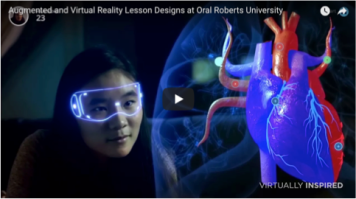5 Creative Ways EdTech Meets Challenges Head-On

Even with an upper management level position at a global company, my daughter-in-law only recently paid off her student debt. In her early thirties, she was still dealing with excessive student loan payments that significantly strained their finances. It took using the equity in the home she and my son sold to do it.
She is not alone. Many graduates are in the same predicament. But what can institutions of higher learning do given declining funding and enrollment? Equally concerning, many businesses complain that universities are not sending them workers who are truly prepared for today’s workplace. Potential students hear these horror stories and, as a result, are opting for less expensive and more creative ways to get an education. Competition has never been more intense among institutions of higher learning whether public or private, large or small, as each tries to stand out in a crowded market.
In a survey done several months ago by Times Higher Education World University Rankings, an international group of over 60,000 students stated the top 3 reasons they pick a university is because of highly qualified teaching staff, high graduation employment rates, and up-to-date technology and online learning options.
Over the course of the last few weeks, you’ve been introduced to several challenges facing higher education including financial constraints, declining enrollments, and inadequate outcomes.
In today’s blog, we will focus on 5 creative ways you can leverage educational technology (EdTech) to meet challenges head-on. Let’s look at a few good examples of how some institutions Use EdTech to:
-
Attract new students and meet their expectations
-
Prepare students for the workplace of the future
-
Engage students by transforming teaching and learning
-
Increase persistence, retention and graduation rates
-
Offer innovative and enticing alternatives
There is no doubt everyone reading this blog already employs educational technology on some level at his or her institution. Of course, it isn’t about the technology but how we apply it to solve challenges and reap great benefits. A $10 million U.S. Department of Education grant in the 90s led me to support Texas institutions in the integration of educational technology. Since then, I’ve spent the last 20 years of my career guiding fellow educators in digital and online learning.
My most recent work with Dr. Susan Aldridge, President of Drexel University Online, has focused on uncovering innovative best practices from around the world. I’ve included a few examples from this recent research.
1. Use EdTech to meet student demands and attract new students
Progressive use of educational technology attracts students. They expect technology-enhanced education. They want tools that empower them to connect and collaborate in a way that is immediate, efficient, and interactive.

Oral Robert University, a private comprehensive liberal arts university with 4,000 students, has received significant recognition lately for innovative EdTech usage. Streamlining workflows and enhancing learning, they are attracting highly qualified teaching staff and providing up-to-date technology and online learning options.
From using EdTech to enable faculty to manage their gradebook through a Fitbit wearable device to integrating over 30 disparate systems into one seamless system, ORU lightens workloads.
Furthermore, teachers can develop high tech, augmented or virtual reality lesson plans in a matter of minutes.
Using a mobile device, students abroad, including Africa, can experience lessons built in AR or VR.
This blog was originally written for the EduAlliance Journal and is shared here with their permission. To read the full blog click here.

